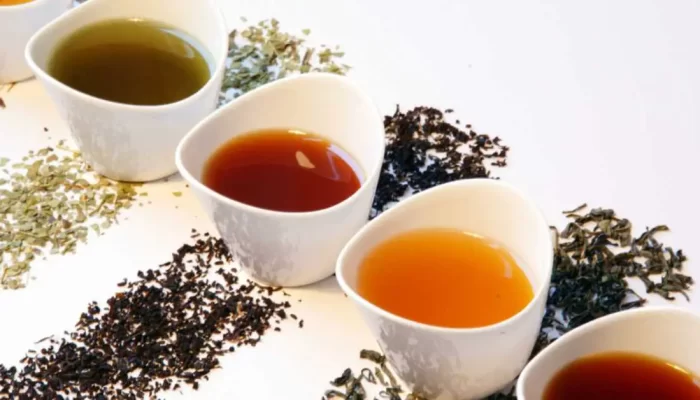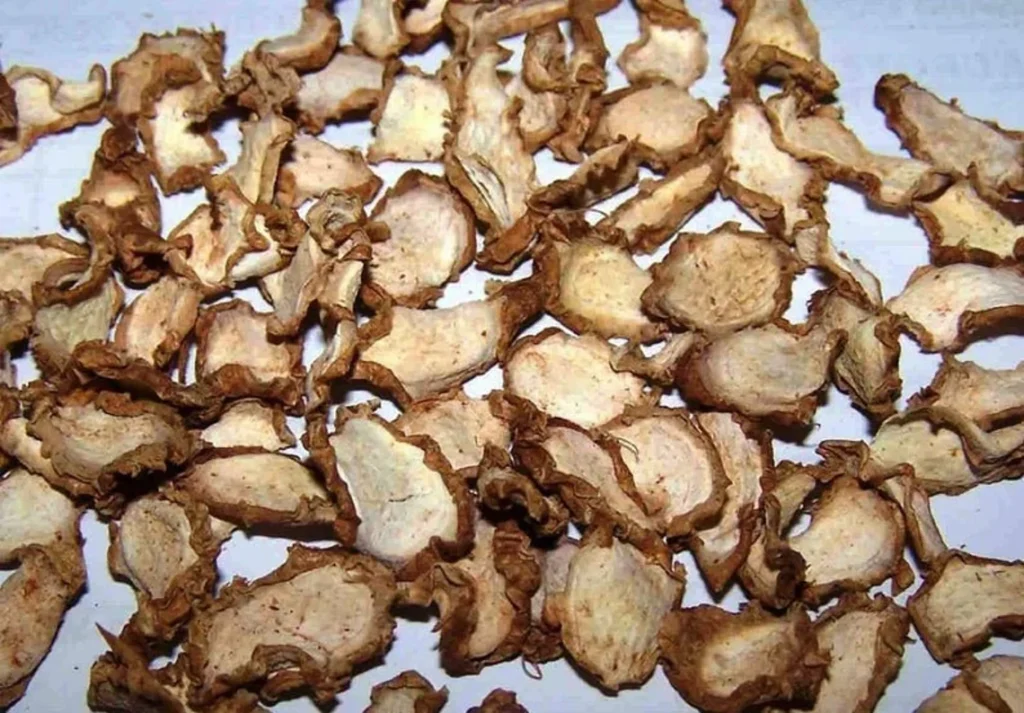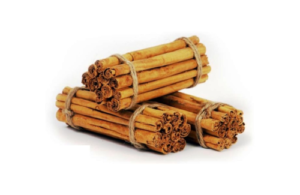Exploring the Enchanting Flavors of Ceylon Tea
Introduction: Welcome to our blog, where we embark on a delightful journey into the world of Ceylon tea. With its rich heritage and unique flavors, Ceylon tea has captured the hearts of tea enthusiasts worldwide. Let’s delve into the fascinating story and flavors of this exceptional tea.
History and Cultivation: Ceylon tea, also known as Sri Lankan tea, has a captivating history. Introduced during the British colonial period, tea cultivation flourished in the lush hills of Sri Lanka. The island’s diverse regions, including Nuwara Eliya, Uva, and Dimbula, offer distinct flavors and characteristics thanks to their unique geography and climate.
Varieties and Flavors: Ceylon tea offers a delightful range of varieties to suit every palate. From robust black teas to delicate green teas, each variety presents a captivating flavor profile. The black teas boast bold and full-bodied flavors, while the green teas exhibit a delicate and refreshing taste. Discover the nuances of fruity, floral, malty, and spicy notes that make Ceylon tea a true delight.
Health Benefits: Aside from its exquisite taste, Ceylon tea offers numerous health benefits. Packed with antioxidants, it aids in fighting free radicals and promotes overall well-being. Additionally, Ceylon tea may support weight management, heart health, and digestion, making it a wholesome beverage choice.
Brewing Tips and Tea Culture: To savor the optimal flavors of Ceylon tea, follow some simple brewing tips. Adjust water temperature, steeping times, and brewing methods based on the variety you’re preparing. In Sri Lankan culture, tea plays a significant role. The tradition of afternoon tea is a cherished ritual, and the tea estates contribute to the country’s economy.
Conclusion: As we conclude our exploration of Ceylon tea, we invite you to experience its enchanting flavors. Indulge in the richness of Ceylon tea’s history, savor its diverse flavors, and embrace the tea culture it embodies. Whether you’re a seasoned tea enthusiast or new to the world of tea, Ceylon tea is sure to captivate your senses and leave you longing for another delightful cup.
Types of Teas To Try in Sri Lanka
Sri Lanka, formerly known as Ceylon, is renowned for its high-quality tea production. The country's diverse climate and elevation variations create the ideal conditions for cultivating different types of tea. Here are some types of teas to try in Sri Lanka: Ceylon Black Tea: This is the most common type of tea produced in Sri Lanka. It comes in various grades and flavors, ranging from mild to robust. Popular variations include Dimbulla, Uva, and Nuwara Eliya teas. Ceylon Green Tea: While not as commonly produced as black tea, Sri Lanka also produces green tea. It has a milder flavor compared to its black counterpart and is known for its potential health benefits. Ceylon White Tea: White tea is made from the youngest leaves and buds of the tea plant. It has a delicate flavor and is minimally processed, making it a sought-after specialty tea. Ceylon Oolong Tea: Oolong tea is partially oxidized, falling between green and black tea. It has a unique flavor profile with a range of floral and fruity notes. Ceylon Silver Tips Tea: Also known as "Silver Needle" tea, this is a rare and highly sought-after white tea made from only the unopened buds of the tea plant. It has a subtle, sweet flavor. Ceylon Herbal Teas: Sri Lanka also produces a variety of herbal teas using local herbs and spices. Popular choices include cinnamon tea, lemongrass tea, and ginger tea. Ceylon Spice Teas: Some teas are blended with spices such as cardamom, cloves, and black pepper to create unique and flavorful infusions. Ceylon Flavored Teas: Tea blends infused with fruits, flowers, and natural flavors are also available. These can range from traditional blends to more innovative combinations. Ceylon Masala Chai: A spiced tea made by brewing black tea with a mixture of aromatic spices, usually including cardamom, cinnamon, cloves, and ginger. Ceylon Estate Teas: Single estate teas are produced at specific tea estates, each offering its unique flavor and characteristics based on the region's terroir. When visiting Sri Lanka or looking to purchase Sri Lankan teas, consider exploring the different types mentioned above. Many tea plantations offer guided tours where you can learn about the tea-making process and even participate in tea tasting sessions to appreciate the nuanced flavors of Ceylon tea.
The Wonders of Kaempferia Galanga: A Hidden Gem in Herbal Medicine
Kaempferia galanga, commonly known as galangal or aromatic ginger, is a small herb with powerful medicinal properties. Native to Southeast Asia, this plant has been revered for centuries in traditional medicine, particularly in Ayurveda and Traditional Chinese Medicine.
Botanical Overview
Kaempferia galanga belongs to the Zingiberaceae family, the same family as ginger and turmeric. The plant is characterized by its short, fleshy rhizomes and broad, flat leaves. It typically grows to a height of 15–30 cm and has fragrant, white, or pale purple flowers that bloom close to the ground.
Medicinal Properties
The rhizomes of Kaempferia galanga are rich in essential oils, flavonoids, and other bioactive compounds that contribute to its wide range of health benefits. Some of the key medicinal properties include:
- Anti-inflammatory: The herb is known for its ability to reduce inflammation, making it useful in treating conditions like arthritis, headaches, and muscle pain.
- Antimicrobial: The essential oils extracted from Kaempferia galanga possess strong antimicrobial properties, effective against a variety of bacteria, fungi, and viruses.
- Digestive Aid: Traditionally, it has been used to alleviate digestive issues such as indigestion, bloating, and gas.
- Respiratory Relief: The herb is also used to treat respiratory conditions such as asthma, bronchitis, and colds due to its expectorant properties.
Culinary Uses
Beyond its medicinal benefits, Kaempferia galanga is also used in cooking, especially in Southeast Asian cuisine. Its rhizomes are often ground into a paste and used as a spice in soups, curries, and marinades, adding a unique flavor that is slightly sweet and peppery.
Growing and Harvesting
Kaempferia galanga is a tropical plant that thrives in well-drained soil and partial shade. It is relatively easy to grow and can be cultivated in pots or directly in the ground. The rhizomes are typically harvested after 8–10 months when they have matured and developed their characteristic aroma.
Conclusion
Kaempferia galanga is more than just a culinary spice; it is a potent herb with a myriad of health benefits. Whether you’re looking to add a unique flavor to your dishes or explore natural remedies, this versatile plant is worth considering.
Discover the Magic of Ceylon Cinnamon: The True Cinnamon
When it comes to spices, few can rival the rich history and versatile uses of Ceylon cinnamon. Known as “true cinnamon,” this prized spice has been revered for centuries, not only for its sweet and delicate flavor but also for its numerous health benefits. Let’s delve into what makes Ceylon cinnamon so special and why it deserves a place in your kitchen and wellness routine.
What is Ceylon Cinnamon?
Ceylon cinnamon, scientifically known as Cinnamomum verum, originates from the inner bark of a tree native to Sri Lanka. Unlike the more common Cassia cinnamon, Ceylon cinnamon is lighter in color and has a subtler, more refined taste. Its thin, soft layers make it easy to grind into a fine powder, and it’s often described as having a sweeter, less spicy flavor profile.
History and Origins
The history of Ceylon cinnamon dates back thousands of years, with records of its use in ancient Egypt, Rome, and China. It was a highly sought-after commodity in the spice trade, valued not only for its culinary uses but also for its role in religious rituals and traditional medicine.
Sri Lanka, formerly known as Ceylon, has been the world’s leading producer of true cinnamon for centuries. The island’s unique climate and soil conditions create the perfect environment for cultivating this exquisite spice.
Health Benefits
Ceylon cinnamon is not just a flavorful addition to your favorite dishes; it’s also packed with health benefits. Here are some reasons why you might want to incorporate Ceylon cinnamon into your diet:
- Antioxidant Powerhouse: Ceylon cinnamon is rich in antioxidants, which help protect the body from oxidative stress and reduce inflammation. This can lower the risk of chronic diseases such as heart disease and cancer.
- Blood Sugar Regulation: One of the most well-known benefits of Ceylon cinnamon is its ability to help regulate blood sugar levels. It can improve insulin sensitivity, making it beneficial for individuals with type 2 diabetes.
- Anti-inflammatory Properties: The anti-inflammatory compounds found in Ceylon cinnamon can help reduce inflammation in the body, alleviating symptoms of conditions like arthritis.
- Heart Health: By lowering cholesterol levels and reducing blood pressure, Ceylon cinnamon supports cardiovascular health.
- Brain Function: Some studies suggest that the compounds in Ceylon cinnamon can improve cognitive function and may even help protect against neurodegenerative diseases like Alzheimer’s.
Culinary Uses
Ceylon cinnamon’s subtle sweetness and warm flavor make it an incredibly versatile spice in the kitchen. Here are a few ways to use it:
- Baking: Add a dash of Ceylon cinnamon to your cakes, cookies, and pastries for a hint of warmth.
- Beverages: Sprinkle it into your morning coffee, tea, or smoothies for an extra layer of flavor.
- Savory Dishes: Use it in curries, stews, and soups to add depth and complexity to your savory recipes.
- Desserts: Ceylon cinnamon pairs beautifully with fruits, especially apples, pears, and bananas, making it a perfect addition to desserts like pies and crumbles.
How to Choose and Store Ceylon Cinnamon
When buying Ceylon cinnamon, look for sticks that are thin, light brown, and have multiple layers rolled into a cigar-like shape. If you prefer ground cinnamon, ensure it’s labeled as Ceylon cinnamon to avoid confusion with the more common Cassia variety.
Store your Ceylon cinnamon in an airtight container in a cool, dark place. Properly stored, cinnamon sticks can last up to a year, while ground cinnamon should be used within six months for optimal flavor.
Conclusion
Ceylon cinnamon is more than just a spice; it’s a powerhouse of flavor and health benefits. Whether you’re looking to enhance your culinary creations or boost your overall well-being, this true cinnamon is a valuable addition to any pantry. Explore the world of Ceylon cinnamon and discover the magic it brings to both your plate and your health.
Cinnamon Infused: Unlocking the Power of Green Tea with a Twist
Indulge in a rejuvenating fusion of flavors with our latest creation – Cinnamon Infused: Unlocking the Power of Green Tea with a Twist. Excite your senses as we blend the goodness of green tea with the warm essence of cinnamon, creating a beverage that not only tantalizes your taste buds but also offers a myriad of health benefits.
Immerse yourself in a sensory journey that combines the antioxidant-rich properties of green tea with the aromatic and anti-inflammatory benefits of cinnamon. Discover a harmonious balance of flavors that will uplift your spirit and invigorate your mind, making each sip a moment of pure bliss and wellness.
Join us as we delve into the art of infusing green tea with cinnamon, unlocking a world of possibilities for your palate and well-being. Embark on a flavorful experience like no other, and let the power of this exquisite blend transform your tea-drinking ritual into a daily indulgence.
Health benefits of green tea
Green tea has garnered significant attention for its impressive array of health benefits. Rich in antioxidants, particularly catechins, green tea is known for its ability to combat oxidative stress and reduce the risk of chronic diseases. Studies have shown that the consumption of green tea can lead to improved cardiovascular health, as it helps lower LDL cholesterol levels and improves overall blood circulation. The active compounds in green tea promote a healthy heart by enhancing endothelial function, which plays a crucial role in maintaining the balance of blood flow and pressure in the body.
Moreover, green tea has been linked to weight management and metabolic health. The catechins in green tea, especially epigallocatechin gallate (EGCG), are known to boost metabolism and increase fat oxidation. This can be particularly beneficial for those looking to shed a few pounds or maintain a healthy weight. Additionally, regular consumption of green tea may help reduce the risk of type 2 diabetes by improving insulin sensitivity and regulating blood sugar levels, making it a smart choice for those conscious of their health.
Cognitive function is another area where green tea shines. The combination of caffeine and L-theanine, an amino acid found in green tea, has been shown to enhance brain function, leading to improved focus, memory, and overall mental clarity. This unique blend provides a gentle lift without the jittery effects often associated with coffee, making green tea an ideal choice for those seeking a calm yet alert state of mind. As we explore the infusion of cinnamon into green tea, we not only enhance its flavor but also amplify these numerous health benefits, creating a delightful elixir that promotes wellness.
The added benefits of cinnamon in green tea
Cinnamon has long been celebrated not only for its aromatic flavor but also for its numerous health benefits. When combined with green tea, cinnamon enhances the overall health properties of this beverage, creating a powerful concoction that can support various bodily functions. One of the standout benefits of cinnamon is its ability to regulate blood sugar levels. Studies have indicated that cinnamon can improve insulin sensitivity and lower fasting blood sugar levels, making it an excellent addition for those managing diabetes or looking to maintain stable energy levels throughout the day.
In addition to its blood sugar-regulating properties, cinnamon is known for its anti-inflammatory effects. Chronic inflammation is linked to many health issues, including heart disease, arthritis, and certain cancers. The compounds in cinnamon can help reduce inflammation in the body, supporting overall health and wellness. By infusing cinnamon into green tea, drinkers can enjoy a soothing beverage that not only tastes great but also acts as a natural anti-inflammatory agent, potentially reducing the risk of chronic diseases.
Furthermore, cinnamon is rich in antioxidants, which help combat oxidative stress and protect the body from damage caused by free radicals. This antioxidant power complements the high levels of catechins found in green tea, creating a synergistic effect that enhances the overall health benefits of the drink. Together, these two ingredients form a formidable duo that promotes heart health, boosts metabolism, and supports cognitive function, making cinnamon-infused green tea a delicious and healthful choice for any time of day.
Cinnamon and its health properties
Cinnamon, derived from the bark of Cinnamomum trees, has been used for centuries not just as a spice but also for its medicinal properties. This fragrant spice is packed with bioactive compounds, such as cinnamaldehyde, which is responsible for its distinct flavor and aroma. Cinnamaldehyde has been shown to possess strong anti-inflammatory and antimicrobial properties, making cinnamon an effective natural remedy for various ailments. Its ability to fight bacteria and fungi adds a layer of protection against infections, contributing to overall health and wellness.
Another impressive property of cinnamon is its potential to support heart health. Research suggests that cinnamon can help lower cholesterol levels and triglycerides while boosting HDL (good) cholesterol. These effects can contribute to a healthier cardiovascular system, reducing the risk of heart disease. Additionally, cinnamon can improve circulation and enhance endothelial function, further supporting heart health. When combined with the cardiovascular benefits of green tea, the result is a powerful beverage that can promote a healthy heart and circulation.
Cinnamon also plays a role in digestive health. It has been traditionally used to alleviate digestive issues, such as bloating and gas. The spice stimulates the production of digestive enzymes, aiding in the breakdown of food and promoting a healthy gut environment. Moreover, its anti-inflammatory properties can help soothe the digestive tract, making it a beneficial addition for those experiencing gastrointestinal discomfort. By infusing cinnamon into green tea, you not only enhance the flavor but also create a drink that can support digestive health and overall well-being.
How to make cinnamon-infused green tea
Creating your own cinnamon-infused green tea at home is a simple and rewarding process. To start, you will need high-quality green tea leaves or tea bags and whole cinnamon sticks or ground cinnamon. The choice between whole and ground cinnamon depends on your preference, but using whole sticks can add a more robust flavor to your infusion. Begin by boiling water in a kettle, ensuring that the temperature is suitable for green tea, typically around 175°F (80°C). Boiling water can scorch green tea leaves, leading to a bitter taste, so it’s essential to let the water cool slightly before pouring it over the tea.
Once the water is at the right temperature, add your green tea leaves or tea bag to your cup or teapot. If using whole cinnamon sticks, break them into smaller pieces to release their flavor more effectively. Add one or two pieces of the cinnamon stick to the tea, or if you prefer ground cinnamon, sprinkle about half a teaspoon into the mixture. Pour the hot water over the tea and cinnamon, allowing it to steep for 2 to 3 minutes. Steeping for too long can result in a bitter flavor, so it’s crucial to keep an eye on the timer.
After steeping, remove the tea leaves or bag and the cinnamon stick, if used. You can sweeten your infusion with honey or maple syrup for added flavor, or enjoy it as is. For an extra touch, consider adding a splash of milk or a dash of vanilla extract to enhance the overall experience. The result is a warm, aromatic cup of cinnamon-infused green tea that combines the health benefits of both ingredients, providing a comforting drink that can be enjoyed any time of day.
Different variations of cinnamon-infused green tea recipes
While the classic cinnamon-infused green tea is delightful on its own, there are numerous variations you can explore to elevate your tea experience. One popular variation is the addition of citrus. Incorporating slices of fresh lemon or orange can brighten the flavors of the tea while providing a dose of vitamin C. Simply add the citrus slices during the steeping process to allow the flavors to meld beautifully. This refreshing twist not only enhances the taste but also adds extra health benefits, making it a perfect morning pick-me-up or afternoon refresher.
Another exciting variation is to introduce spices such as ginger or cardamom into your cinnamon-infused green tea. Ginger adds a warming effect and can aid digestion, while cardamom offers a unique flavor profile that complements cinnamon well. To prepare this variation, simply add a few slices of fresh ginger or a couple of crushed cardamom pods along with the cinnamon during the steeping process. This combination creates a robust and aromatic tea that is perfect for cold days or when you need a little extra comfort.
For those who enjoy a sweeter, dessert-like experience, consider making a cinnamon-infused green tea latte. After steeping your tea as described earlier, add steamed milk or your favorite dairy alternative to create a creamy beverage. You can also enhance the flavor with a dash of vanilla extract or a sprinkle of nutmeg or cocoa powder. This latte variation is not only indulgent but also provides a nourishing drink that combines the benefits of green tea and cinnamon, making it a delightful treat for any time of day.
The best time to enjoy cinnamon-infused green tea
Cinnamon-infused green tea can be enjoyed at various times throughout the day, each offering different benefits. Starting your day with a warm cup of this tea can provide a gentle energy boost without the jitters associated with coffee. The combination of caffeine and L-theanine in green tea enhances focus and mental clarity, making it an excellent choice for mornings when you need to kickstart your productivity. Pairing it with a healthy breakfast can also help regulate blood sugar levels, setting a positive tone for the day ahead.
Mid-afternoon is another ideal time to indulge in cinnamon-infused green tea. As the day progresses and energy levels may dip, this soothing beverage can serve as a pick-me-up. The aromatic qualities of cinnamon can uplift your mood, while the antioxidants in green tea combat oxidative stress from the day’s activities. This makes it a perfect companion during work breaks or as an afternoon snack to stave off cravings and keep you feeling satisfied.
Finally, enjoying a cup of cinnamon-infused green tea in the evening can promote relaxation and aid digestion. The warm, comforting flavors can create a calming ritual that signals the end of the day. Furthermore, the presence of L-theanine in green tea can help reduce anxiety and promote a sense of calm, making it a suitable choice for unwinding before bedtime. Just be mindful of the caffeine content, as some individuals may be sensitive to caffeine in the evening. Opting for decaffeinated green tea can allow you to enjoy the flavors without disrupting your sleep.
Caffeine content in cinnamon-infused green tea
Understanding the caffeine content in cinnamon-infused green tea is essential for those who are mindful of their caffeine intake. Green tea naturally contains caffeine, though typically in lower amounts compared to black tea or coffee. On average, an 8-ounce cup of brewed green tea contains about 20-45 mg of caffeine, depending on the steeping time and the type of green tea used. When cinnamon is added, it does not contribute any additional caffeine; however, the overall caffeine content will still depend on the green tea base you choose.
For those who are sensitive to caffeine or looking to reduce their intake, there are several options available. Decaffeinated green tea is a great alternative that retains most of its flavor and health benefits while having minimal caffeine. This allows you to enjoy your cinnamon-infused tea without the stimulating effects associated with caffeine, making it suitable for any time of day, including evenings when relaxation is desired.
If you enjoy the flavor of cinnamon-infused green tea but want to limit caffeine consumption, consider blending it with herbal teas that are naturally caffeine-free. Herbal infusions such as chamomile or peppermint can provide a soothing base, allowing you to enjoy the warm, spicy notes of cinnamon without the caffeine boost. This versatile approach enables you to tailor your tea experience to your personal preferences and lifestyle.
Where to buy high-quality cinnamon and green tea
Finding high-quality ingredients is key to creating the best cinnamon-infused green tea experience. When it comes to green tea, look for reputable brands that source their leaves from renowned regions, such as Japan or China. Loose leaf green tea often offers superior flavor and freshness compared to tea bags, so consider exploring specialty tea shops or online retailers that provide a wide selection of loose leaf options. Pay attention to the harvest date and packaging, as fresher tea leaves will yield a more flavorful brew.
For cinnamon, the best choice is often Ceylon cinnamon, also known as “true” cinnamon, which offers a sweeter, more delicate flavor compared to the more common Cassia variety. Ceylon cinnamon is less pungent and has a more complex flavor profile, making it ideal for infusing into beverages. You can find high-quality Ceylon cinnamon in health food stores, specialty spice shops, or online. Look for organic options when possible, as they are often free from additives and pesticides.
When purchasing both green tea and cinnamon, consider buying in bulk to save money and ensure you have enough on hand for multiple infusions. Many online retailers offer bulk purchasing options, allowing you to stock up on your favorite ingredients. Additionally, joining a tea subscription service can provide you with a curated selection of high-quality teas delivered to your doorstep, making it easier to discover new flavors and blends that complement your cinnamon-infused green tea journey.
Conclusion and final thoughts
Cinnamon-infused green tea is more than just a delicious beverage; it represents a harmonious blend of taste and health benefits that can elevate your daily routine. By harnessing the antioxidant-rich properties of green tea and the aromatic, anti-inflammatory qualities of cinnamon, this delightful infusion offers a unique way to promote wellness while indulging in a flavorful experience. Whether you enjoy it as a morning energizer, a mid-afternoon pick-me-up, or a calming evening ritual, cinnamon-infused green tea holds the power to enhance your overall well-being.
As you explore the various recipes and variations of this exquisite drink, don’t hesitate to experiment with your favorite flavors and ingredients. The combination of spices, herbs, and sweeteners can personalize your cinnamon-infused green tea experience, making it truly your own. Remember the importance of sourcing high-quality green tea and cinnamon, as this will make a significant difference in flavor and health benefits.
Incorporating cinnamon-infused green tea into your daily routine can be a step towards a healthier lifestyle while providing moments of joy and indulgence. So, gather your ingredients, brew a cup, and savor the delightful fusion of flavors that will uplift your spirit and invigorate your mind. Cheers to your health and the wonderful journey that awaits with every sip of this enchanting beverage!
https://winproductlanka.com/dilmah-green-tea-with-cinnamon-20s-40g/






The very next time I read a blog, I hope that it wont disappoint me as much as this one. I mean, Yes, it was my choice to read through, however I genuinely believed you would have something interesting to talk about. All I hear is a bunch of crying about something you could fix if you werent too busy searching for attention.
Real Estate I like the efforts you have put in this, regards for all the great content.
BaddieHub I very delighted to find this internet site on bing, just what I was searching for as well saved to fav